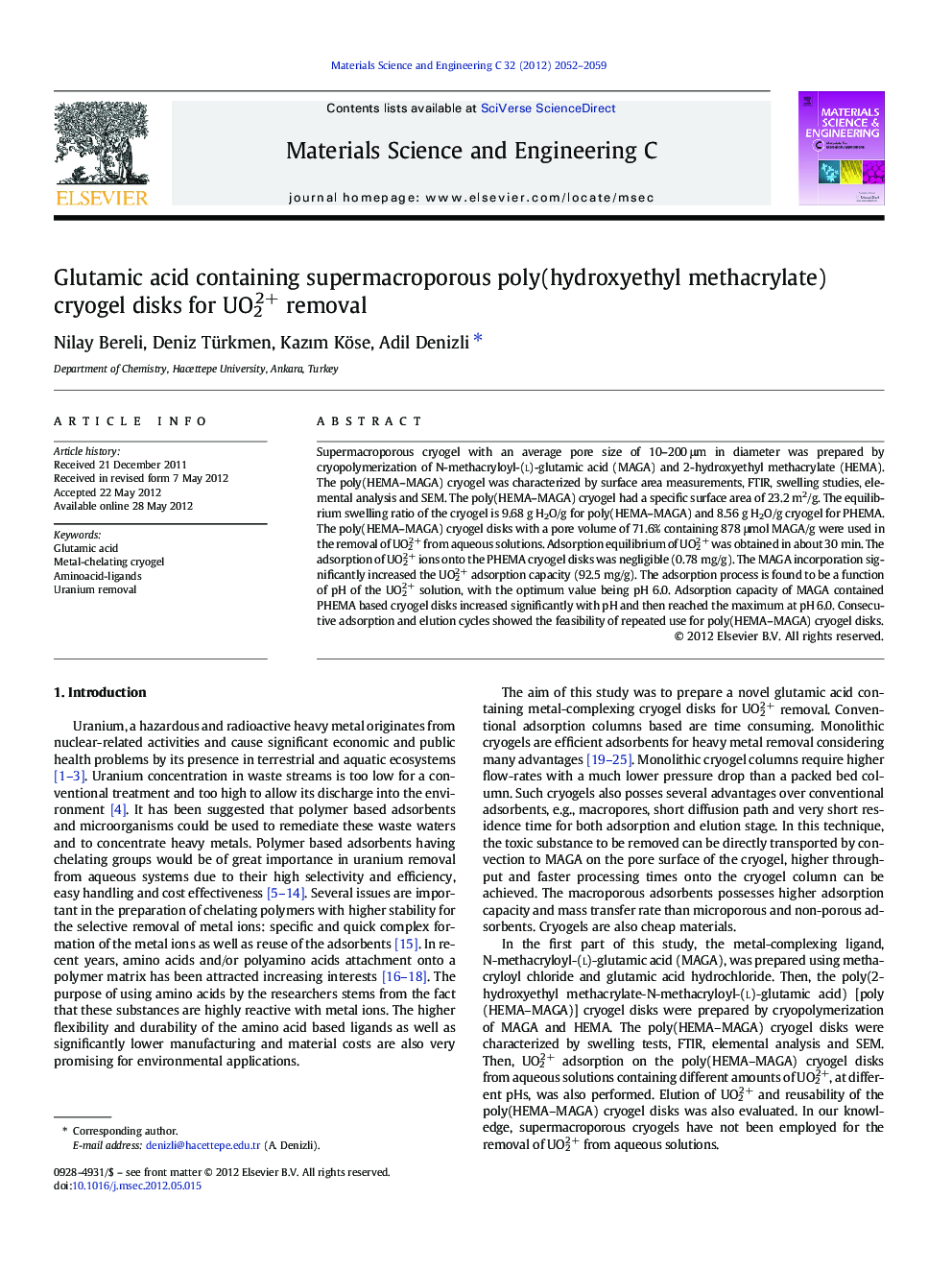| Article ID | Journal | Published Year | Pages | File Type |
|---|---|---|---|---|
| 1429362 | Materials Science and Engineering: C | 2012 | 8 Pages |
Supermacroporous cryogel with an average pore size of 10–200 μm in diameter was prepared by cryopolymerization of N-methacryloyl-(l)-glutamic acid (MAGA) and 2-hydroxyethyl methacrylate (HEMA). The poly(HEMA–MAGA) cryogel was characterized by surface area measurements, FTIR, swelling studies, elemental analysis and SEM. The poly(HEMA–MAGA) cryogel had a specific surface area of 23.2 m2/g. The equilibrium swelling ratio of the cryogel is 9.68 g H2O/g for poly(HEMA–MAGA) and 8.56 g H2O/g cryogel for PHEMA. The poly(HEMA–MAGA) cryogel disks with a pore volume of 71.6% containing 878 μmol MAGA/g were used in the removal of UO22+ from aqueous solutions. Adsorption equilibrium of UO22+ was obtained in about 30 min. The adsorption of UO22+ ions onto the PHEMA cryogel disks was negligible (0.78 mg/g). The MAGA incorporation significantly increased the UO22+ adsorption capacity (92.5 mg/g). The adsorption process is found to be a function of pH of the UO22+ solution, with the optimum value being pH 6.0. Adsorption capacity of MAGA contained PHEMA based cryogel disks increased significantly with pH and then reached the maximum at pH 6.0. Consecutive adsorption and elution cycles showed the feasibility of repeated use for poly(HEMA–MAGA) cryogel disks.
► We prepared a novel glutamic acid containing cryogel disks for UO22+ removal. ► MAGA acts as the metal-complexing ligand. ► There is no need to activate the matrix for the metal-complexing ligand attachments. ► In this study we have also benefited from the advantages of cryogels. ► The maximum amount of UO22+ adsorption capacity achieved in this study was 92.5 mg/g.
